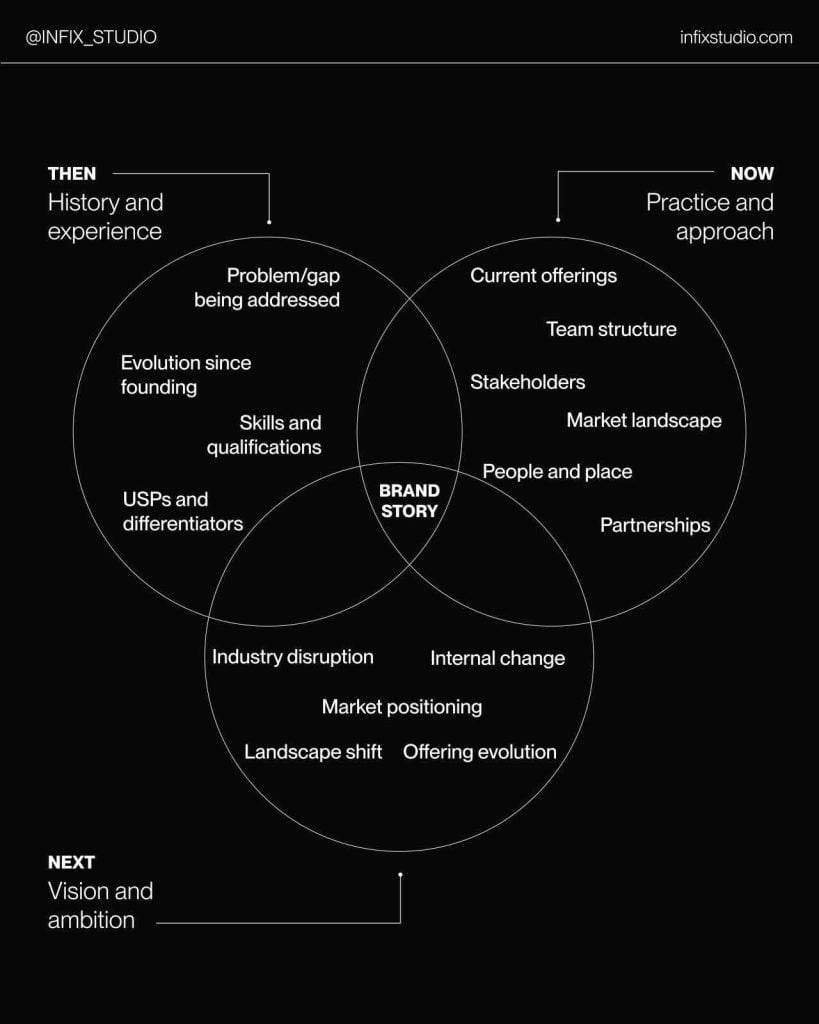 When you think of a story, what comes to mind? Maybe a romance read from last summer? Or perhaps a fairytale from your childhood? What you’ll probably realise is that your mind is filled with stories from across the years. In fact, we’re genetically wired to love storytelling.
When you think of a story, what comes to mind? Maybe a romance read from last summer? Or perhaps a fairytale from your childhood? What you’ll probably realise is that your mind is filled with stories from across the years. In fact, we’re genetically wired to love storytelling.
But a story doesn’t have to be confined to fiction. Storytelling is a strategic business asset in today’s automated and digitally driven society. It’s how brands can cut through, connect and be remembered. Working with both emerging startups and global household names, I’ve seen first-hand how effective storytelling drives growth at every stage of the business journey.
Why is storytelling so crucial?
When people advocate for their ideas, they typically start by constructing arguments rooted in data, facts and figures. However, studies show that sharing a story is more likely to persuade as the narrative fosters a deep, emotional connection between the storyteller and the audience. This approach taps into the innate human desire for connection and allows consumers to form deep, meaningful attachments to products or services – even ones they’ve never used themselves.
By interweaving a narrative through the customer journey and marketing, companies can transform what would otherwise be standard, expected interactions into memorable experiences for the audience. According to Stanford Research, this is actually 22 times more memorable than facts alone – a statistic likely even higher for stories that appeal on an emotional level.
Customers now also expect companies to prove how they’re making an impact. Ironically, knowing a company genuinely cares about more than its sales targets is a key driver for consumers to purchase more. When only 10 percent of companies actually embody their mission, businesses have the opportunity to tell stories that offer a positive impression of what they stand for and what they’re actually doing. People will feel this, in turn buying from you before buying from a competitor.
Crafting a compelling narrative: From authenticity to strategy
When it comes to business storytelling, many focus on their history and track record – not what’s to come. Others talk about the future as their next step, creating a gap between their ambition and current offering.
The most effective brand stories offer an aspirational sense of the future by talking about where they want to be like they’re already there. They don’t talk about tomorrow like it’s in the pipeline, but in a way that gives it a sense of currency. It’s a simple shift that generates momentum and change potential for the future, while also fostering engagement and alignment with the future. But as brand storytelling drives a business forward, it’s important this manifesto also acknowledges what has come before.
Based on my work with organisations such as Facebook, Google, YouTube and WhatsApp, as well as emerging Australian startups, I’ve developed a simple yet incredibly effective three-step approach for brand story development.
Where have you come from?
Firstly, we look at the vision, mission, purpose and goals that formed at the business’ founding. This realises why the business was initially born and the direction that was defined in the earliest days – it’s your business foundation or your ‘why’.
When looking back in time, it’s important that we consider:
- Your goals. Remember to look beyond marketing and communications metrics. Your business goals should embody your ambitions as an organisation.
- Your vision and mission. These may feel similar, but there are slight nuances that make both different yet equally important. A mission statement defines your business, your objectives and how you’ll reach these objectives. A vision statement details where you aspire to go.
- Your business purpose. This is the reason you formed your company, often boiled down to a single sentence or two. It can be industry-specific, but must be specifically enough to support ancillary and future business activities,
- Your brand story. This can change and that’s okay. In fact, it’s actually a good sign – it means you’re growing and evolving as a company. It’s important that we still recognise where you originally began as it can reinforce this growth to the audience and remind them of your why.
Where are you going now?
It’s natural that your foundation informs the way the business comes to life through its offering, including USPs, product, people and persona. This second step blends your current offering with your ‘North Star’, essentially articulating how your business embodies your foundation. In short, it’s your ‘how’.
Any gaps between your why and how can create a sense of distrust, inconsistency and confusion, which are all significant barriers to engagement, purchase and long-term investment. For this reason, we need to consider this stage as building blocks that build on the foundation of where you’ve come from – not as a different chapter or a separate chain of thinking. Only then can the audience understand the true trajectory and narrative of a business.

Big-picture storytelling
Storytelling is most commonly linked to marketing and communications within a business. However, we see that a strong brand story allows for continued elevation and transformation as it creates the foundations for cohesiveness and clarity across all aspects of the business. This is particularly relevant during a launch, growth or change period.
With this in mind, a well-grounded brand story can be the roadmap for business trajectory across product or service, leadership, workplace, workforce, community and more. Defining and articulating the narrative both internally and externally creates a sense of transparency and authenticity that enables aligned, simplified decision-making, supports the development of strategic frameworks and unites all sectors of a business. Ultimately, it supports whole company growth towards the North Star.
Initiating your storytelling strategy
Strategic storytelling is at the heart of business success. By crafting and integrating a compelling narrative, businesses can build a distinctive identity and foster meaningful connections with their audience. This train of thought rings true at every stage of the journey and is crucial for long-term success – whether you’re already a household name or you’re on day one of disrupting the status quo.
When activating your story strategy, don’t forget the biggest narrative driver: what makes you human? How do you transform the lives of your audience? How are you making a positive mark on the world, your industry or your customers?
In a fast-paced world, where everyone is focused on doing things faster and easier, be the brand that dares to be human. Embrace storytelling as a continual journey, refining and evolving your narrative to ensure it remains relevant and impactful at every stage of your brand’s evolution.
The bravest brands are those that stand out and ultimately become a legacy. Be the brand that becomes a best-seller.
Niamh Sullivan is the CEO and founder of INFIX – a storytelling studio. Sullivan is also a Forbes 30 Under 30 semi-finalist and TEDx speaker and she is renowned across the industry for her expertise in strategic storytelling.
This post was originally published on this site be sure to check out more of their content







